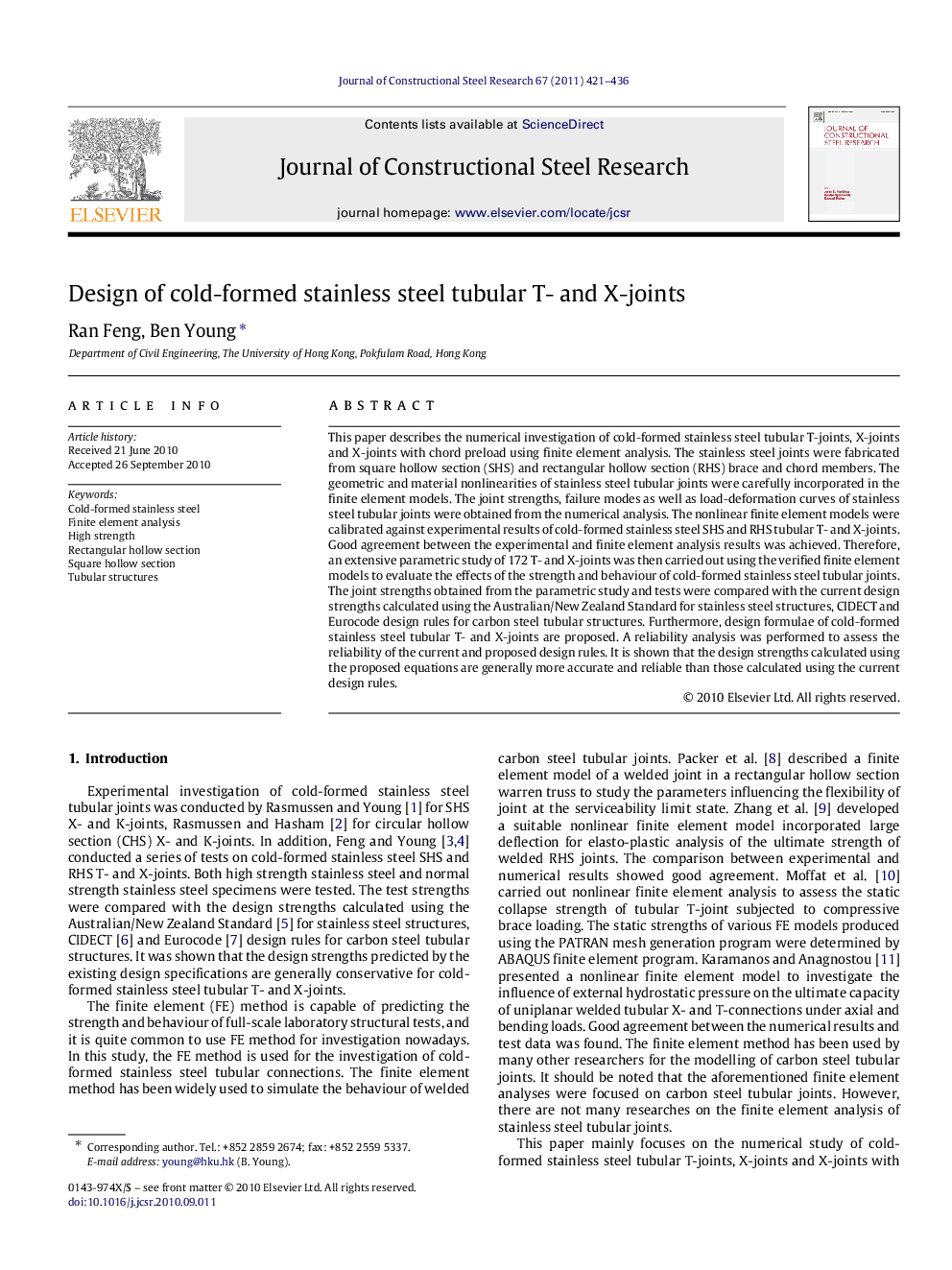| Article ID | Journal | Published Year | Pages | File Type |
|---|---|---|---|---|
| 285367 | Journal of Constructional Steel Research | 2011 | 16 Pages |
This paper describes the numerical investigation of cold-formed stainless steel tubular T-joints, X-joints and X-joints with chord preload using finite element analysis. The stainless steel joints were fabricated from square hollow section (SHS) and rectangular hollow section (RHS) brace and chord members. The geometric and material nonlinearities of stainless steel tubular joints were carefully incorporated in the finite element models. The joint strengths, failure modes as well as load-deformation curves of stainless steel tubular joints were obtained from the numerical analysis. The nonlinear finite element models were calibrated against experimental results of cold-formed stainless steel SHS and RHS tubular T- and X-joints. Good agreement between the experimental and finite element analysis results was achieved. Therefore, an extensive parametric study of 172 T- and X-joints was then carried out using the verified finite element models to evaluate the effects of the strength and behaviour of cold-formed stainless steel tubular joints. The joint strengths obtained from the parametric study and tests were compared with the current design strengths calculated using the Australian/New Zealand Standard for stainless steel structures, CIDECT and Eurocode design rules for carbon steel tubular structures. Furthermore, design formulae of cold-formed stainless steel tubular T- and X-joints are proposed. A reliability analysis was performed to assess the reliability of the current and proposed design rules. It is shown that the design strengths calculated using the proposed equations are generally more accurate and reliable than those calculated using the current design rules.
Research highlights► Cold-formed stainless steel tubular T- and X-joints have been investigated. ► The current design rules are unconservative for specimens failed by chord face. ► The proposed design rules are more accurate and reliable than the current design rules.
